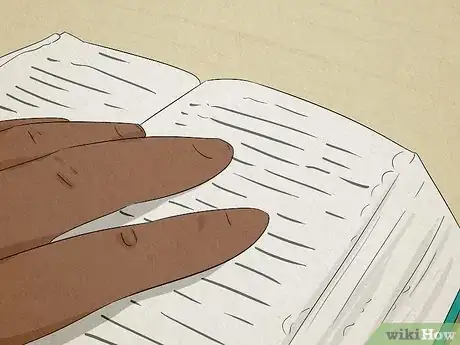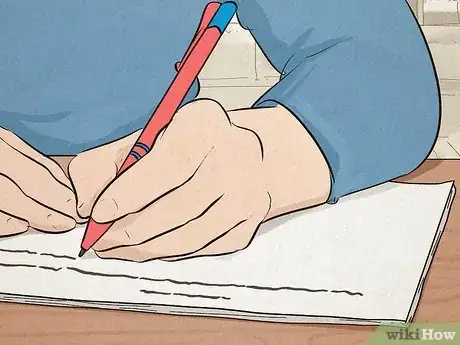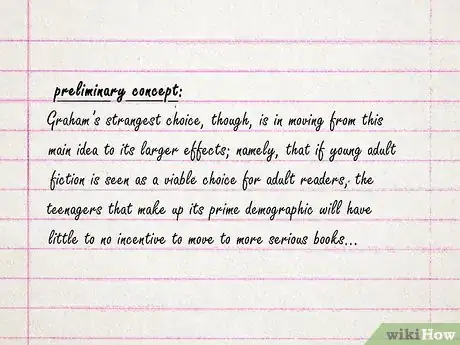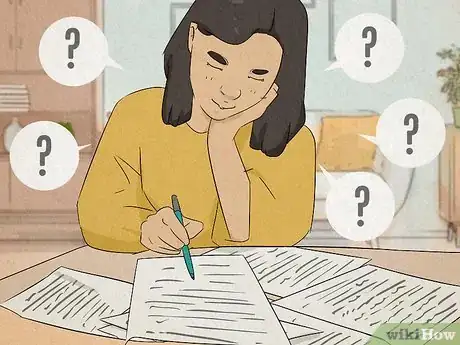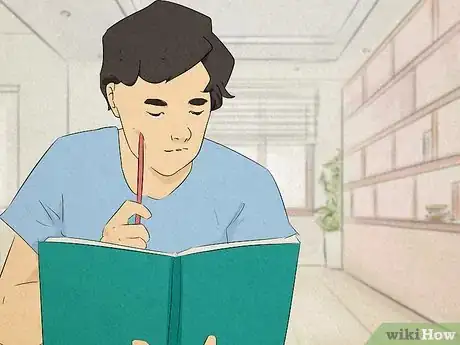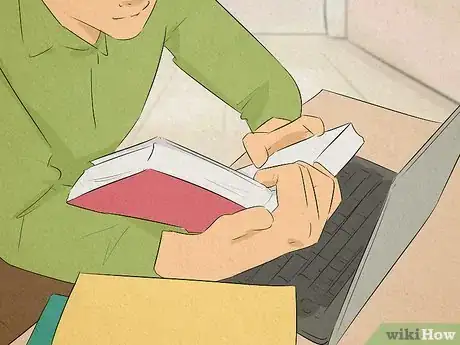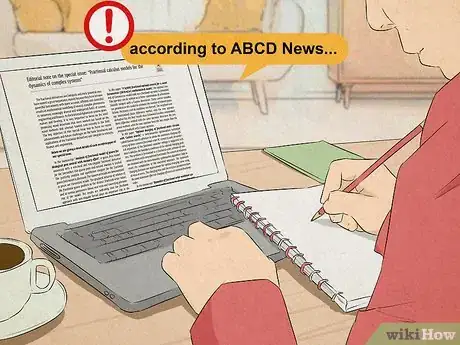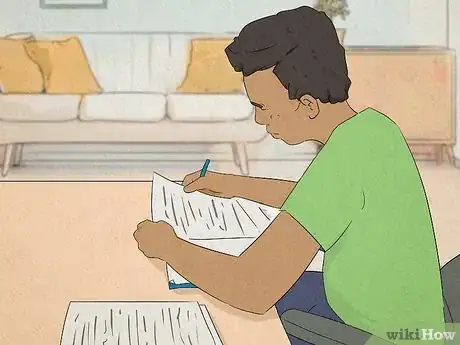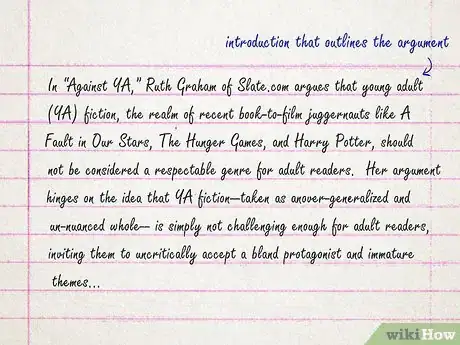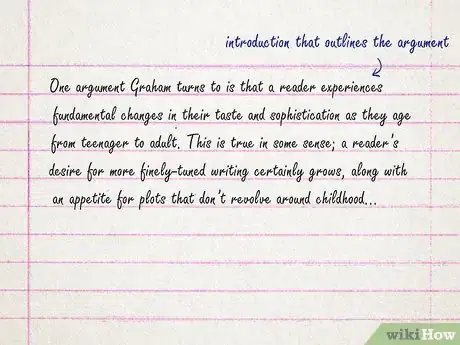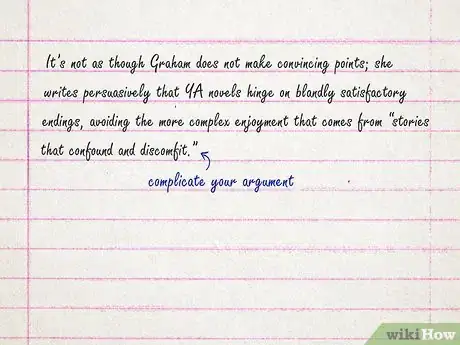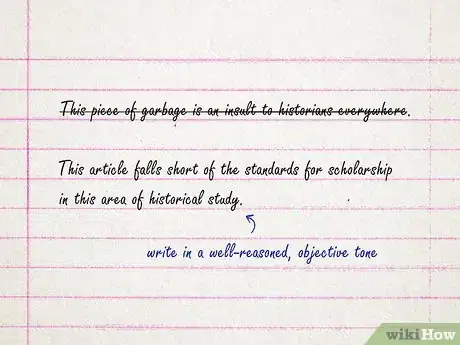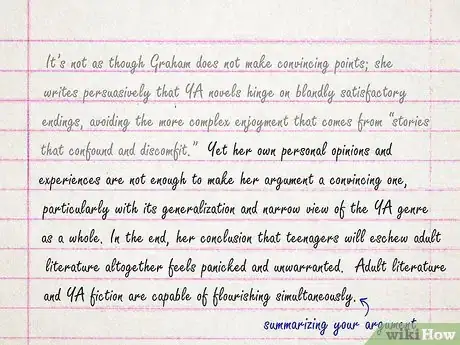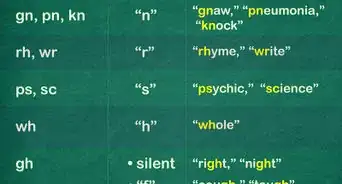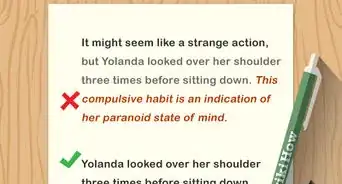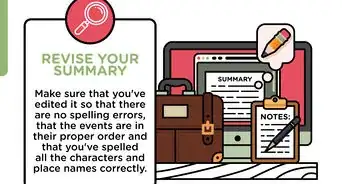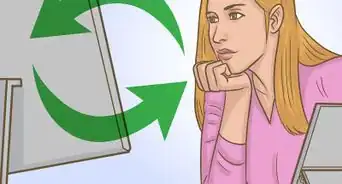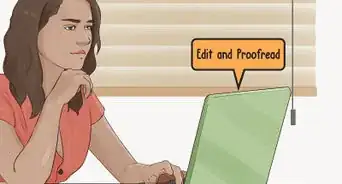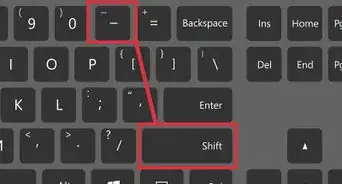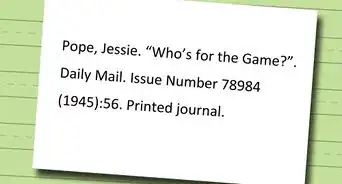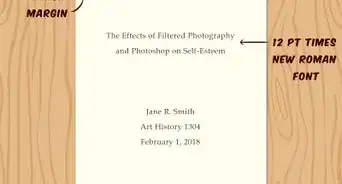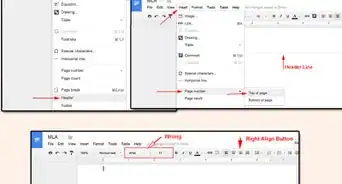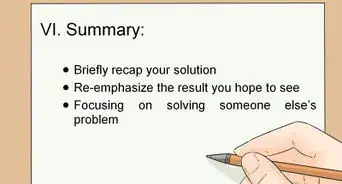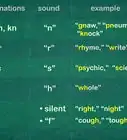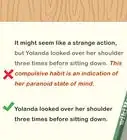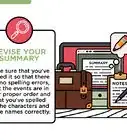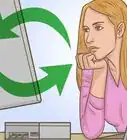This article was co-authored by Richard Perkins and by wikiHow staff writer, Christopher M. Osborne, PhD. Richard Perkins is a Writing Coach, Academic English Coordinator, and the Founder of PLC Learning Center. With over 24 years of education experience, he gives teachers tools to teach writing to students and works with elementary to university level students to become proficient, confident writers. Richard is a fellow at the National Writing Project. As a teacher leader and consultant at California State University Long Beach's Global Education Project, Mr. Perkins creates and presents teacher workshops that integrate the U.N.'s 17 Sustainable Development Goals in the K-12 curriculum. He holds a BA in Communications and TV from The University of Southern California and an MEd from California State University Dominguez Hills.
There are 8 references cited in this article, which can be found at the bottom of the page.
wikiHow marks an article as reader-approved once it receives enough positive feedback. This article received 25 testimonials and 89% of readers who voted found it helpful, earning it our reader-approved status.
This article has been viewed 917,983 times.
A critique of an article is the objective analysis of a literary or scientific piece, with emphasis on whether or not the author supported the main points with reasonable and applicable arguments based on facts. It's easy to get caught up in simply summarizing the points of an article without truly analyzing and challenging it. A good critique demonstrates your impressions of the article, while providing ample evidence to back up your impressions. As the critic, take time to read carefully and thoughtfully, prepare your arguments and evidence, and write clearly and cogently.
Steps
Reading Actively
-
1Read through the article once to get the main idea. The first time you read through an article, you should simply try to understand the overall argument that the author is making. Note the author's thesis.[1]
- Pay attention to the intro paragraph and conclusion paragraph–where the author often puts main points.[2]
-
2Mark up the text as you read through it again. It is sometimes helpful to use a red pen to make your markings stand out. Highlight key quotes.[3] Ask yourself questions like these as you read through a second time:[4]
- What is the author's thesis/argument?
- What is the author's purpose in arguing said thesis?
- Who is the intended audience? Does the article effectively reach this audience?
- Does the author have ample and valid evidence?
- Are there any holes in the author's argument?
- Did the author misrepresent evidence or add bias to evidence?
- Does the author reach a conclusive point?
Advertisement -
3Create a legend for your markings. Create a unique symbol to differentiate between parts of the text that might be confusing, important, or inconsistent.
- For example, you could underline important passages, circle confusing ones, and star inconsistencies.
- Creating a legend with assigned symbols allows you to quickly mark up an article. Though it may take a little bit of time to recognize your own symbols, they will quickly become ingrained in your mind and allow you to breeze through an article much quicker than without a symbol legend.
-
4Take some longer notes during subsequent readings. In addition to a legend, it is helpful to take notes when expanded thoughts come to you as you read. For instance, if you realize that an author's claim can be refuted by noting a scientific study that you previously read, make a note of it in the margins, on a separate piece of paper, or on a computer so that you can come back to your idea.[5]
- Don't be foolish enough to think that you will remember your idea when it comes time to write your critique.
- Spend the necessary time writing down your observations as you read. You will be glad you did when it comes time to put your observations into a complete analytical paper.
-
5Develop a preliminary concept for your critique. Form a vague opinion of the piece in question. Evaluate the author's overall argument after you have read the article through two or three times. Record your initial reactions to the text.[6]
- Make a list of possible sources of evidence for your critique. Jog your memory for any literature you've read or documentaries you've seen that might be useful for evaluating the article.
Gathering Evidence
-
1Question whether the writer's overall message is logical. Test the hypothesis and compare it to other similar examples.[7]
- Even if an author has done research and quoted respected experts, analyze the message for its practicality and real world application.
- Examine the author's introduction and conclusion to make sure they match up as convincing and complementary elements.[8]
-
2Search the article for any biases, whether intentional or unintentional. If the author has anything to gain from the conclusions demonstrated in the article, it's possible that some bias has been demonstrated.[9]
- Bias includes ignoring contrary evidence, misappropriating evidence to make conclusions appear different than they are, and imparting one's own, unfounded opinions on a text. Well-sourced opinions are perfectly OK, but those without academic support deserve to be met with a skeptical eye.
- Bias can also come from a place of prejudice. Note any biases related to race, ethnicity, gender, class, or politics.
-
3Consider the author's interpretations of other texts. If the author makes a claim about another's work, read the original work and see if you agree with the analysis provided in the article. Complete agreement is obviously not necessary or even likely; but consider whether the author's interpretation is defensible.[10]
- Note any inconsistencies between your interpretation of a text and the author's interpretation of a text. Such conflict may bear fruit when it comes time to write your review.
- See what other scholars have to say. If several scholars from diverse backgrounds have the same opinion about a text, that opinion should be given more weight than an argument with little support.
-
4Notice if the author cites untrustworthy evidence. Does the author cite an irrelevant text from fifty years ago that no longer holds weight in the discipline at hand? If the author cites unreliable sources, it greatly diminishes the credibility of the article.[11]
-
5Don't completely ignore stylistic elements. The content of the article is likely the most important aspect for your literary critique, but don't overlook the formal and/or literary techniques that the author might use. Pay attention to obscure word choices and the author's tone throughout the article. This is particularly helpful for non-scientific articles dealing with aspects of literature, for example.
- Pay attention to places where the author's tone reveals they think something is deeply important.[12]
- These aspects of an article can reveal deeper issues in the larger argument. For example, an article written in a heated, overzealous tone might be ignoring or refusing to engage with contradictory evidence in its analysis.
- Always look up the definitions of unfamiliar words. A word's definition can completely change the meaning of a sentence, especially if a particular word has several definitions. Question why an author chose one particular word instead of another, and it might reveal something about their argument.
-
6Question research methods in scientific articles. If critiquing an article containing a scientific theory, be sure to evaluate the research methods behind the experiment. Ask yourself questions such as these:[13]
- Does the author detail the methods thoroughly?
- Is the study designed without major flaws?
- Is there a problem with the sample size?
- Was a control group created for comparison?
- Are all of the statistical calculations correct?
- Would another party be able to duplicate the experiment in question?
- Is the experiment significant for that particular field of study?
-
7Dig deep. Use your existing knowledge, educated opinions, and any research you can gather to either support or disagree with the author's article. Provide empirical arguments to support your stance.
- While there is no such thing as too much good evidence, over-sourcing can also be a problem if your arguments become repetitive. Make sure each source provides something unique to your critique.
- Additionally, don't allow your use of sources to crowd out your own opinions and arguments.
-
8Remember that a critique doesn't have to be entirely positive or negative. In fact, the most interesting literary critiques often don't vehemently disagree with the author; rather, they build upon or complicate the author's idea with additional evidence.[14]
- If you do agree entirely with the author, therefore, make sure to build upon the argument either by providing additional evidence or complicating the author's idea.
- You can provide contradictory evidence to an argument while still maintaining that a particular point of view is the correct one.
- Don't “take it easy” on the author due to misguided empathy; but neither should you be excessively negative in an attempt to prove your critical bona fides. Forcefully express your defensible points of agreement and disagreement.
Formatting Your Critique
-
1Begin with an introduction that outlines your argument. The introduction should be no more than two paragraphs long and should lay out the basic framework for your critique. Start off by noting where the article in question fails or succeeds most dramatically and why.[15]
- Be sure to include the name of the author, article title, the journal or publication the article appeared in, the publication date, and a statement about the focus and/or thesis of the article in your introductory paragraph(s).
- The introduction is not the place to provide evidence for your opinions. Your evidence will go in the body paragraphs of your critique.
- Be bold in your introductory assertions and make your purpose clear right off the bat. Skirting around or not fully committing to an argument lessens your credibility.
-
2Provide evidence for your argument in the body paragraphs of your critique. Each body paragraph should detail a new idea or further expand your argument in a new direction.[16]
- Begin each body paragraph with a topic sentence that summarizes the content of the paragraph to come. Don't feel like you have to condense the entire paragraph into the topic sentence, however. This is purely a place to transition into a new or somehow different idea.
- End each body paragraph with a transitional sentence that hints at, though does not explicitly state, the content of the paragraph coming next. For example, you might write, "While John Doe shows that the number of cases of childhood obesity is rising at a remarkable rate in the U.S., there are instances of dropping obesity rates in some American cities." Your next paragraph would then provide specific examples of these anomalous cities that you just claimed exist.
-
3Complicate your argument near the end of the critique. No matter how solid your argument is, there is always at least one dramatic way in which you can provide a final twist or take your argument one step further and suggest possible implications. Do this in the final body paragraph before your conclusion to leave the reader with a final, memorable argument.
- You might, for instance, utilize a counterargument, in which you anticipate a critique of your critique and reaffirm your position. Use phrases like “Admittedly,” “It is true that,” or “One might object here” to identify the counterargument. Then, answer these possible counters and turn back to your strengthened argument with “but,” “yet,” or “nevertheless.”
-
4Present your arguments in a well-reasoned, objective tone. Avoid writing in an overzealous or obnoxiously passionate tone, as doing so can be a turn-off to many readers. Let your passion shine through in your ability to do thorough research and articulate yourself effectively.[17]
- While writing “This piece of garbage is an insult to historians everywhere” might garner attention, “This article falls short of the standards for scholarship in this area of historical study” is more likely to be taken seriously by readers.
-
5Conclude your critique by summarizing your argument and suggesting potential implications. It is important to provide a recap of your main points throughout the article, but you also need to tell the reader what your critique means for the discipline at large.[18]
- Are there broad implications for the field of study being assessed, or does your critique simply attempt to debunk the messy work of another scholar?
- Do your best to make a lasting mark on the reader in the conclusion by using assertive language to demonstrate the importance of your work: “Challenging the claims of such a distinguished scholar is no easy or enjoyable task, but it is a task we all must agree to do for our generation and those to follow.”
Sample Critique
Expert Q&A
-
QuestionHow do you critique a story?
 Richard PerkinsRichard Perkins is a Writing Coach, Academic English Coordinator, and the Founder of PLC Learning Center. With over 24 years of education experience, he gives teachers tools to teach writing to students and works with elementary to university level students to become proficient, confident writers. Richard is a fellow at the National Writing Project. As a teacher leader and consultant at California State University Long Beach's Global Education Project, Mr. Perkins creates and presents teacher workshops that integrate the U.N.'s 17 Sustainable Development Goals in the K-12 curriculum. He holds a BA in Communications and TV from The University of Southern California and an MEd from California State University Dominguez Hills.
Richard PerkinsRichard Perkins is a Writing Coach, Academic English Coordinator, and the Founder of PLC Learning Center. With over 24 years of education experience, he gives teachers tools to teach writing to students and works with elementary to university level students to become proficient, confident writers. Richard is a fellow at the National Writing Project. As a teacher leader and consultant at California State University Long Beach's Global Education Project, Mr. Perkins creates and presents teacher workshops that integrate the U.N.'s 17 Sustainable Development Goals in the K-12 curriculum. He holds a BA in Communications and TV from The University of Southern California and an MEd from California State University Dominguez Hills.
Writing Coach & Academic English Coordinator After finishing each chapter, reread the first and the last pages of it, as the author will probably use them to get a point across to you. Give yourself a second viewing of the story to help you better critique a story.
After finishing each chapter, reread the first and the last pages of it, as the author will probably use them to get a point across to you. Give yourself a second viewing of the story to help you better critique a story. -
QuestionWhat are the characteristics that a good critique should have?
 Richard PerkinsRichard Perkins is a Writing Coach, Academic English Coordinator, and the Founder of PLC Learning Center. With over 24 years of education experience, he gives teachers tools to teach writing to students and works with elementary to university level students to become proficient, confident writers. Richard is a fellow at the National Writing Project. As a teacher leader and consultant at California State University Long Beach's Global Education Project, Mr. Perkins creates and presents teacher workshops that integrate the U.N.'s 17 Sustainable Development Goals in the K-12 curriculum. He holds a BA in Communications and TV from The University of Southern California and an MEd from California State University Dominguez Hills.
Richard PerkinsRichard Perkins is a Writing Coach, Academic English Coordinator, and the Founder of PLC Learning Center. With over 24 years of education experience, he gives teachers tools to teach writing to students and works with elementary to university level students to become proficient, confident writers. Richard is a fellow at the National Writing Project. As a teacher leader and consultant at California State University Long Beach's Global Education Project, Mr. Perkins creates and presents teacher workshops that integrate the U.N.'s 17 Sustainable Development Goals in the K-12 curriculum. He holds a BA in Communications and TV from The University of Southern California and an MEd from California State University Dominguez Hills.
Writing Coach & Academic English Coordinator To really critique an article, the most important thing you can present is evidence. Ask yourself, "What did I just read? What can I pull from it to support my point?" You have to really go through the article with a fine tooth comb to be able to critique the author's main idea.
To really critique an article, the most important thing you can present is evidence. Ask yourself, "What did I just read? What can I pull from it to support my point?" You have to really go through the article with a fine tooth comb to be able to critique the author's main idea. -
QuestionHow could I critique an article about bullying?
 Community AnswerIdentify the claims made in the article, and determine whether they are supported by convincing evidence and clearly expressed. Look for strengths and weaknesses in the content and style of the article, and provide supported evidence regarding ways in which the article could be improved.
Community AnswerIdentify the claims made in the article, and determine whether they are supported by convincing evidence and clearly expressed. Look for strengths and weaknesses in the content and style of the article, and provide supported evidence regarding ways in which the article could be improved.
Warnings
- Avoid style-based critiques that include comments such as "I liked it" or "It was written poorly." Instead, focus on the content of the article.⧼thumbs_response⧽
- Avoid summarizing the article at all costs. It is better to write a shorter critique than to attempt to fill up blank space with boring summation.⧼thumbs_response⧽
References
- ↑ Richard Perkins. Writing Coach & Academic English Coordinator. Expert Interview. 1 September 2021.
- ↑ Richard Perkins. Writing Coach & Academic English Coordinator. Expert Interview. 1 September 2021.
- ↑ Richard Perkins. Writing Coach & Academic English Coordinator. Expert Interview. 1 September 2021.
- ↑ https://libguides.uta.edu/literarycriticism/steps
- ↑ https://mlpp.pressbooks.pub/writinghandbook/chapter/chapter-1/
- ↑ https://www.jmu.edu/uwc/files/link-library/CritiqueHandout.pdf
- ↑ https://www.scribbr.com/statistics/hypothesis-testing/
- ↑ Richard Perkins. Writing Coach & Academic English Coordinator. Expert Interview. 1 September 2021.
- ↑ https://libguides.uwgb.edu/bias
- ↑ http://www.uis.edu/ctl/wp-content/uploads/sites/76/2013/03/Howtocritiqueajournalarticle.pdf
- ↑ http://www.uis.edu/ctl/wp-content/uploads/sites/76/2013/03/Howtocritiqueajournalarticle.pdf
- ↑ Richard Perkins. Writing Coach & Academic English Coordinator. Expert Interview. 1 September 2021.
- ↑ https://www.khanacademy.org/science/biology/intro-to-biology/science-of-biology/a/the-science-of-biology
- ↑ https://www.jmu.edu/uwc/files/link-library/CritiqueHandout.pdf
- ↑ https://www.jmu.edu/uwc/files/link-library/CritiqueHandout.pdf
- ↑ https://www.jmu.edu/uwc/files/link-library/CritiqueHandout.pdf
- ↑ http://www.uis.edu/ctl/wp-content/uploads/sites/76/2013/03/Howtocritiqueajournalarticle.pdf
- ↑ https://www.jmu.edu/uwc/files/link-library/CritiqueHandout.pdf
About This Article
To critique an article, first read it and take notes on the author's overall argument to help you develop a preliminary opinion. Then go back through the article to look for evidence that supports your position. Ask whether the author’s logic make sense, for example, or if they demonstrate any bias in their writing. Look at any claims the author makes about other texts, then read those texts yourself to see if the author's points are valid. For more information on critiquing an article, like including a counterargument, read on!
